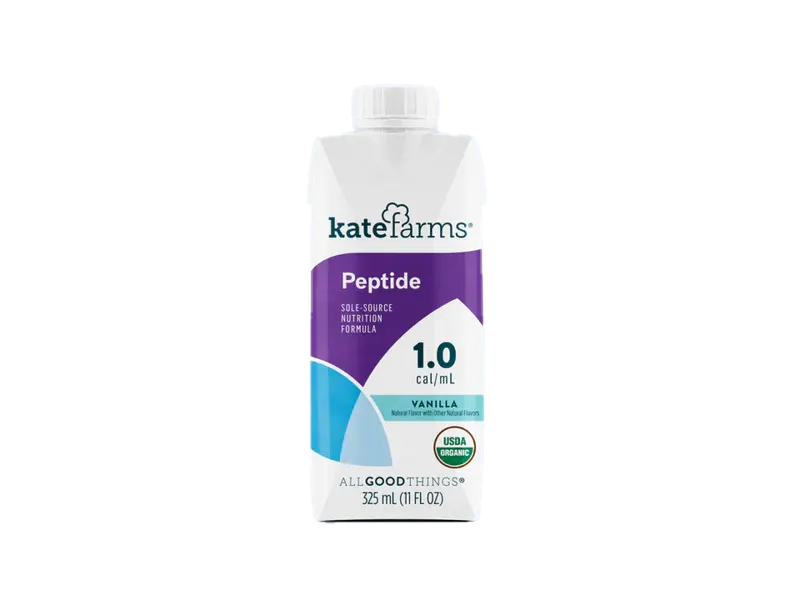Managing Enteral Feeding at Home: A Complete Guide
Essential tips and best practices for safe, effective home enteral nutrition management, empowering patients and caregivers with confidence.

Transitioning to home enteral feeding can feel overwhelming at first, but with proper preparation, education, and support, most patients and their families successfully manage tube feeding at home. Home enteral nutrition offers numerous benefits including improved quality of life, reduced healthcare costs, and the comfort of familiar surroundings. This comprehensive guide will help you establish safe, effective routines for home enteral feeding.
Setting Up Your Home Feeding Environment
Essential Equipment and Supplies
Having the right equipment properly organized is crucial for successful home enteral feeding. Create a dedicated feeding area that's clean, comfortable, and easily accessible.
Home Feeding Station Checklist:
Equipment:
- □ Enteral feeding pump
- □ Pump tubing sets
- □ Feeding bags/containers
- □ Syringes (60mL) for flushing
- □ pH strips (if applicable)
- □ Measuring cup
Supplies:
- □ Hand sanitizer and gloves
- □ Clean towels
- □ Tape for tube securing
- □ Emergency contact information
- □ Feeding schedule chart
- □ Supply inventory log
Storage and Organization
Formula Storage:
Store unopened cans/containers in a cool, dry place. Refrigerate opened formula and use within 24-48 hours. Check expiration dates regularly.
Equipment Organization:
Keep supplies in a clean, designated cabinet or container. Organize by frequency of use and maintain adequate backup supplies.
Cleaning Supplies:
Maintain separate, dedicated cleaning supplies for feeding equipment. Never mix with regular household cleaning items.
Daily Feeding Routines
Pre-Feeding Preparation
Establishing a consistent pre-feeding routine helps ensure safety and reduces the risk of complications.
- Hand hygiene: Wash hands thoroughly with soap and water for at least 20 seconds
- Gather supplies: Collect all necessary equipment before beginning
- Check formula: Verify expiration date, temperature, and appearance
- Position patient: Elevate head of bed 30-45 degrees
- Tube verification: Check tube placement if trained to do so
- Flush tube: Use warm water to ensure tube patency
Feeding Administration
Step-by-Step Feeding Process:
Connect feeding bag to pump and prime tubing to remove air
Set pump to prescribed rate and volume
Connect tubing to feeding tube using aseptic technique
Start pump and monitor for proper function
Stay with patient for first 15 minutes to monitor tolerance
Flush tube with water after feeding completion
Safety and Hygiene Practices
Infection Prevention
Maintaining strict hygiene standards is essential for preventing infections and complications.
Do's:
- • Wash hands before and after handling feeding equipment
- • Use clean technique for all procedures
- • Replace feeding bags every 24 hours
- • Keep formula refrigerated when not in use
- • Clean and dry all reusable equipment thoroughly
- • Monitor for signs of infection
Don'ts:
- • Never hang formula for more than 4-8 hours at room temperature
- • Don't use expired formula or supplies
- • Avoid contaminating feeding connections
- • Don't ignore signs of tube malfunction
- • Never force flush a blocked tube
- • Don't mix medications with formula without approval
Tube Care and Maintenance
Daily Tube Care:
- • Flush tube with 30-60mL warm water before and after each feeding
- • Clean external portion of tube and securing device
- • Rotate tape/securing device location to prevent skin irritation
- • Inspect tube for cracks, leaks, or other damage
Skin Care Around Tube Site:
- • Clean around tube site daily with mild soap and water
- • Pat area dry gently; don't rub
- • Monitor for redness, swelling, drainage, or odor
- • Apply barrier cream if recommended by healthcare provider
Common Challenges and Solutions
Challenge: Tube Blockage
Prevention:
- • Flush tube regularly with water
- • Avoid thick formulas if not prescribed
- • Crush medications thoroughly when approved
- • Maintain proper feeding rate
Solutions:
- • Try gentle flushing with warm water
- • Contact healthcare provider for guidance
- • Never use force or sharp objects
- • Consider pancreatic enzyme solution if prescribed
Challenge: Nausea or Vomiting
Prevention:
- • Start with slower feeding rates
- • Ensure proper patient positioning
- • Check formula temperature
- • Avoid overfeeding
Management:
- • Stop feeding immediately
- • Keep patient upright
- • Contact healthcare provider
- • Consider anti-nausea medication if prescribed
Challenge: Diarrhea
Possible Causes:
- • Formula intolerance
- • Too rapid feeding rate
- • Medication side effects
- • Contaminated formula or equipment
Management:
- • Slow feeding rate
- • Ensure proper hygiene
- • Monitor hydration status
- • Consult with healthcare provider
When to Contact Your Healthcare Provider
Call Immediately For:
- • Persistent vomiting or nausea
- • Signs of tube displacement
- • Fever or signs of infection
- • Severe abdominal pain
- • Tube cannot be unclogged
- • Skin breakdown around tube site
- • Excessive diarrhea or constipation
- • Equipment malfunction
- • Patient shows signs of dehydration
- • Any concerns about patient safety
Building Confidence and Independence
Managing home enteral feeding becomes easier with time and practice. Start slowly, ask questions, and don't hesitate to reach out for support. Many families find that home feeding eventually becomes a natural part of their routine, allowing for greater independence and quality of life.
Tips for Success:
- • Keep a feeding log to track progress and identify patterns
- • Maintain regular communication with your healthcare team
- • Connect with other families managing home enteral feeding
- • Stay organized with supplies and schedules
- • Celebrate small victories and progress milestones
- • Don't be afraid to ask for help when needed
Need Support with Home Enteral Feeding?
Our team of registered dietitians and clinical specialists provides comprehensive support for home enteral nutrition, including training, troubleshooting, and ongoing monitoring.